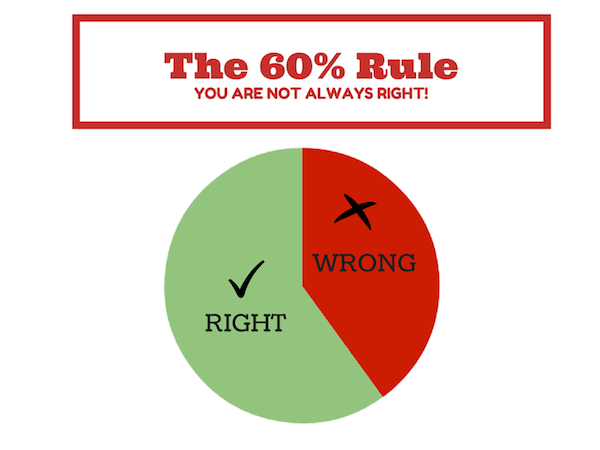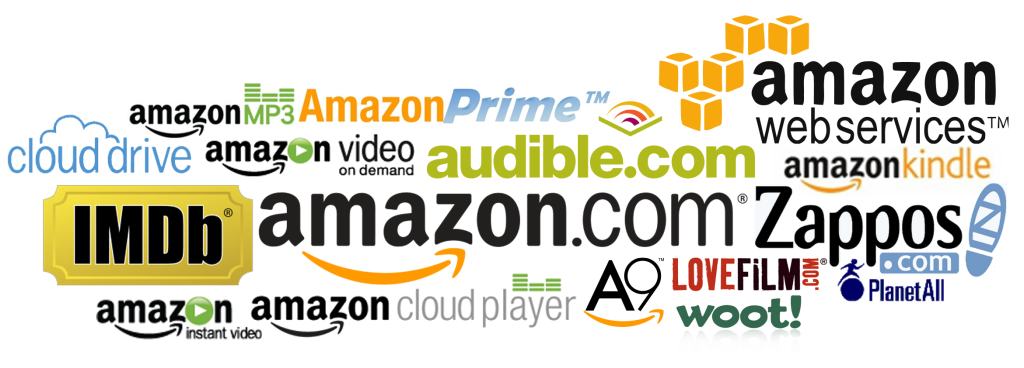Breakthrough products are created out of thin air by a singular product visionary — your Steve Jobsian figure in a black turtleneck and a ponderous look. He yells at people and tells them what to do, until it’s perfect and done.
To Chris Savage, co-founder and CEO of Wistia, one of the biggest video hosting sites on the web for businesses, that’s a widespread misconception that can harm the way you run your business.
Chris has a rule of thumb on making product decisions that’s both incredibly humbling to all you Jobs disciples out there and imperative to grasp. The rule is this: the very best of us only get product decisions right 60% of the time. The rest of the time, we’re wrong.
How the 60% Rule Transformed Amazon
In founding Amazon.com, Jeff Bezos envisioned a colossal bookstore that carried more titles than was possible at any physical bookstore. With three million books in print worldwide, Amazon’s advantage would be game-changing. But in 2002, with the bookstore having done over $3 billion in sales in 2001, Bezos issued a dramatic edict. The company would be organized into small, autonomous teams within a service-oriented architecture.
Separate teams would offer their own independent services, much like small startups within a larger company. Instead of having the technology powering the Amazon.com bookstore become one big bundle, they would spin off separate services, with the tech decoupled. For example, the Kindle reader became its own distinct, autonomously run team within the company. Now Amazon is comprised of a number of business in the areas of retail, computing, digital content, local delivery, and more — altogether worth billions of dollars.
What spawned this massive reorganization is a profound realization: even Jeff Bezos can’t always build the right thing. He had a hit with the bookstore, but to continue making Amazon a massive success, the entire company couldn’t hinge on Jeff Bezos’s ability to guess the next magical right thing to build.
Even as a notorious micromanager, Bezos had to grant meaningful autonomy to his teams, the people closest to customer problems, in order to make decisions, iterate, and solve those problems.
How the 60% Rule Changes the Way that You Manage
We can’t all spark a massive reorganization within the companies we work for, but we can carry ourselves differently at work when armed with the 60% rule. This is how the 60% rule has changed the way that Savage runs his team at Wistia to give his team more autonomy at work.
 Keep bringing the conversation back to the high-level “why”
Keep bringing the conversation back to the high-level “why”
When Savage realized the 60% rule, that made him realize how micromanagement harmed his company. Micromanagement means actively getting involved in decision-making where you’re detached from the problem and lack situational awareness. Under these disconnected conditions, your hit rate on making the right decision as a manager is much, much lower.
That’s why in meetings and one-on-ones with his team, Savage ties issues back to the high-level “why” question. Why are we doing this? That’s where the manager is an expert, able to offer a high-level view on the “why” that spans not only what the individual employee is doing but what the organization as a whole means to accomplish.
Arm your team with the “why”, and then let them make their own mistakes
When you understand the 60% rule, you’ll realize that when someone on your team makes the wrong decision, you likely would’ve made the wrong one in their shoes, too. Even the best of us consistently make incorrect product decisions.
Given that, the point as a leader is not to make right and wrong decisions. It’s about creating an environment in which people working with the product day after day can make unbottlenecked, swift decisions until they hit on the right ones.
Think long term
Individual decisions are like individual battles. So instead of focusing on winning the battle, focus on winning the war. You can still win the war when you lose 40% of your battles. To Savage, this means not losing your head when things are going wrong. When you proactively manage your psychology, you defend yourself from individual losses piling up and weighing you down wherever you go.
One tip that helped him keep his cool was to spend an hour at the beginning of the week writing down what he hoped to accomplish that week that was within his control. That gave him a longer perspective beyond the minute-to-minute basis many entrepreneurs live in. Then, even when individual decisions were wrong, he could point to the right longer-term direction that the company was heading.


